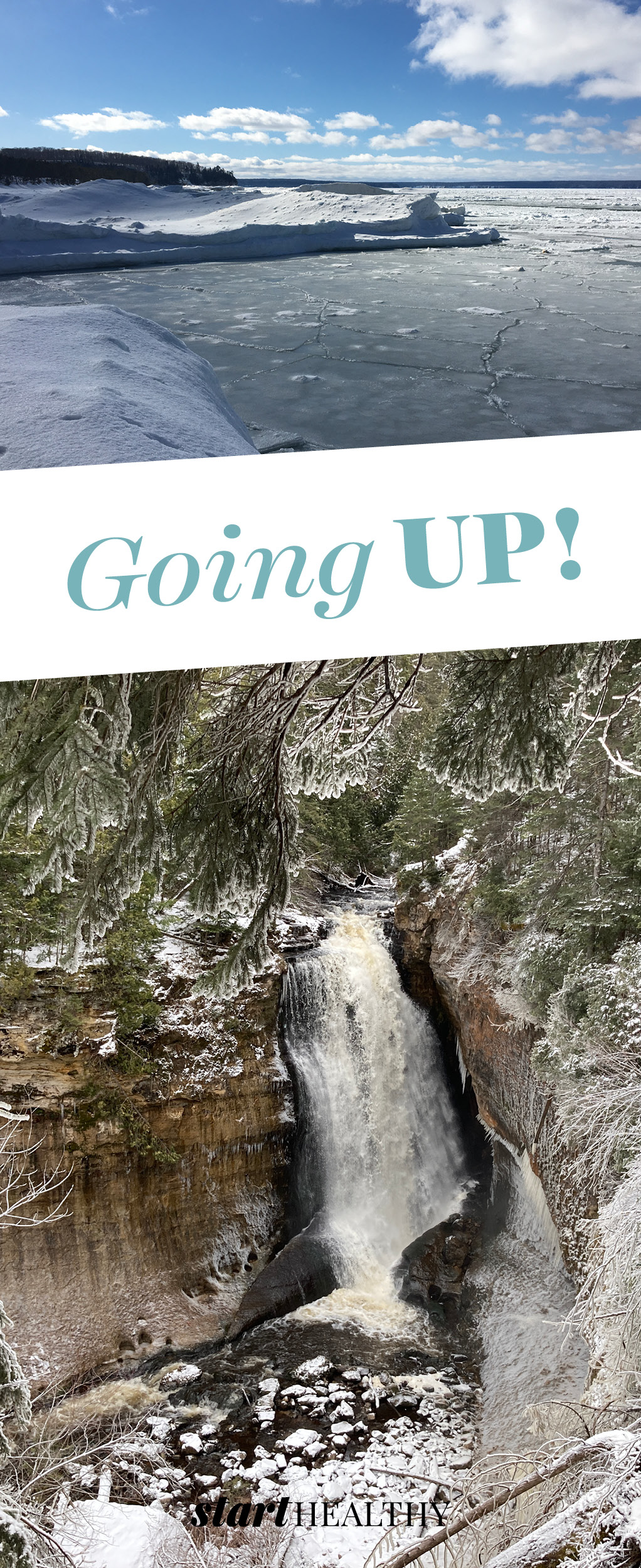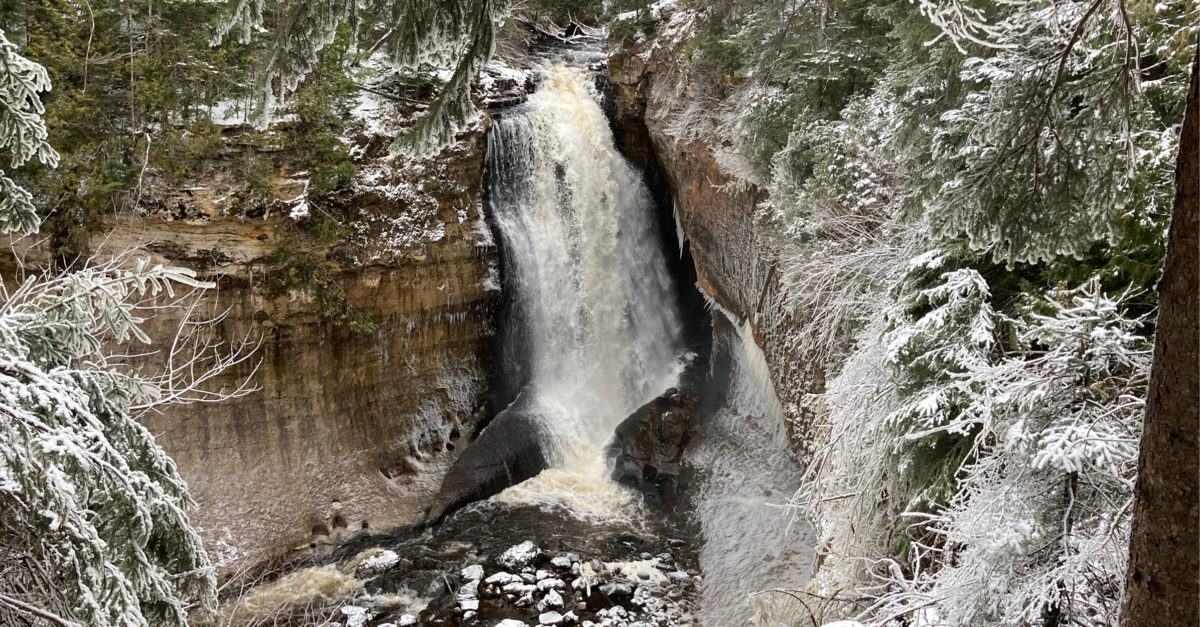Going UP!
photography by: national park service
If you venture north of some of Michigan’s most populous cities, past Ann Arbor, Detroit, and Grand Rapids, you’ll reach the state’s Upper Peninsula, or UP, as it is aptly known.
The UP is one of the most well-preserved pieces of wilderness anywhere in the contiguous United States, and it is the epitome of a winter paradise. The area spans fifteen counties and hits its northernmost point in Isle Royale National Park, which grazes the border with Canada.
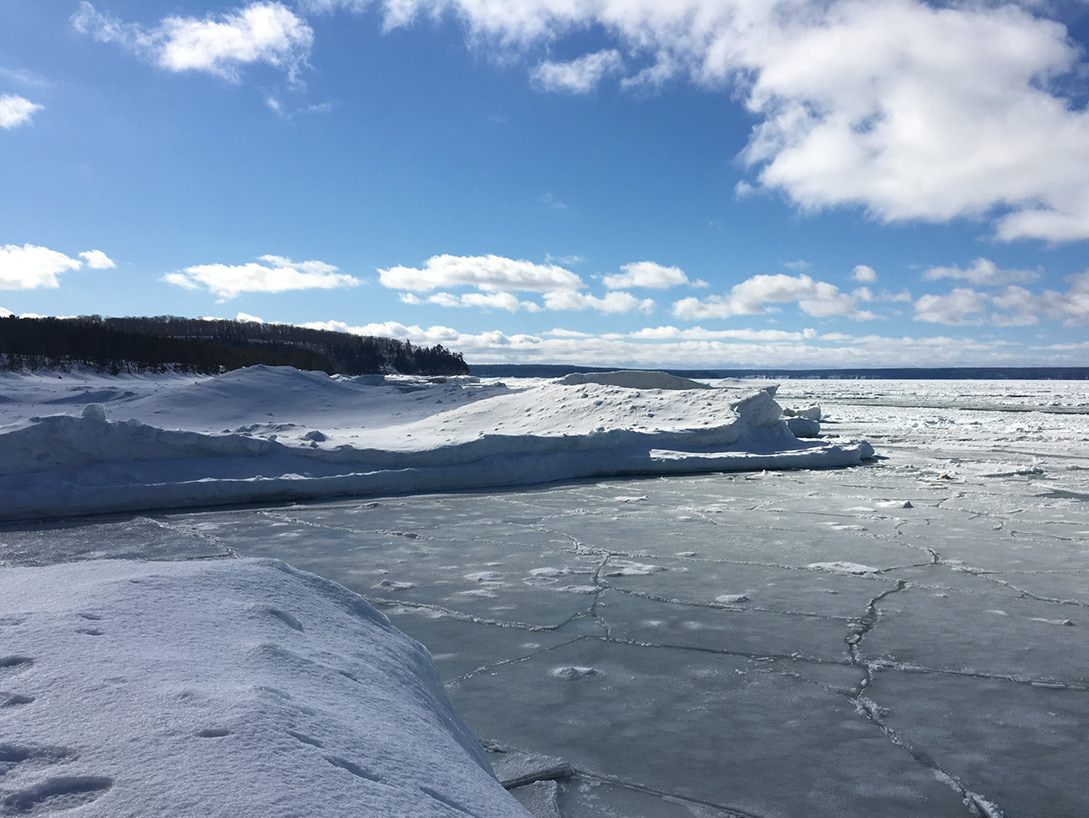
Painting the Picture
Pictured Rocks was established as the country’s first official national lakeshore in 1966 and, thanks to its protected status, it has remained a pristine place to view some of the most interesting geological formations in the country. These enormous rocks, made up mostly of sandstone, began forming hundreds of millions of years ago. The rugged, colorful cliffs have been slowly degraded by the wind and water from Lake Superior, creating interesting configurations like arches, spires, and even caves that are visible from the park’s forty-two miles of coastline.
There are a number of popular spots to visit within the park’s stretch of cliffs, including the Jacobsville Formation (the oldest in the park), which is made up of layers of red quartz sandstone contrasted with white rock, and the Munising Formation, with layers of gray and white minerals. These color variations form when water is forced out of the rock, sending minerals like iron, copper, and manganese traveling downward— hence the name Pictured Rocks.
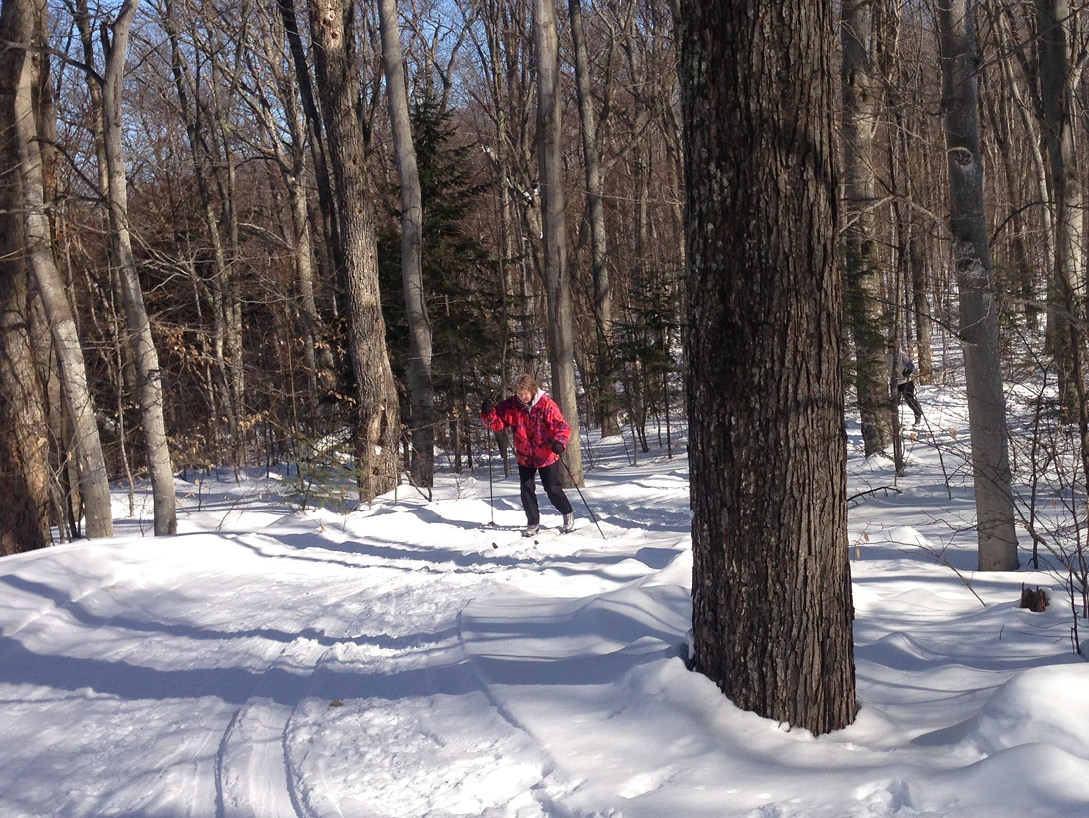
Thanks to its close proximity to Lake Superior, most of the towns across the UP receive a minimum of fifty inches of snow per year. Houghton, one of the area’s northernmost towns, juts out into Lake Superior and gets an average of 207 inches per year.
At the heart of all the ice and snow of a UP winter lies a truly magical place: Pictured Rocks National Lakeshore—a paradise for the season’s adventure seekers.
While the cliffs are stunning on their own, one of the park’s most unique features is its perched sand dunes, aptly named because they are literally perched on top of the cliffs. These dunes at Pictured Rocks are one of the best examples of their kind in the world, according to the National Park Service, and they stretch across five miles. The natural beauty of the lakeshore and plethora of beaches and water activities make it a popular destination in the summer months, but winter is a rare treat in its own right for one breathtaking reason.
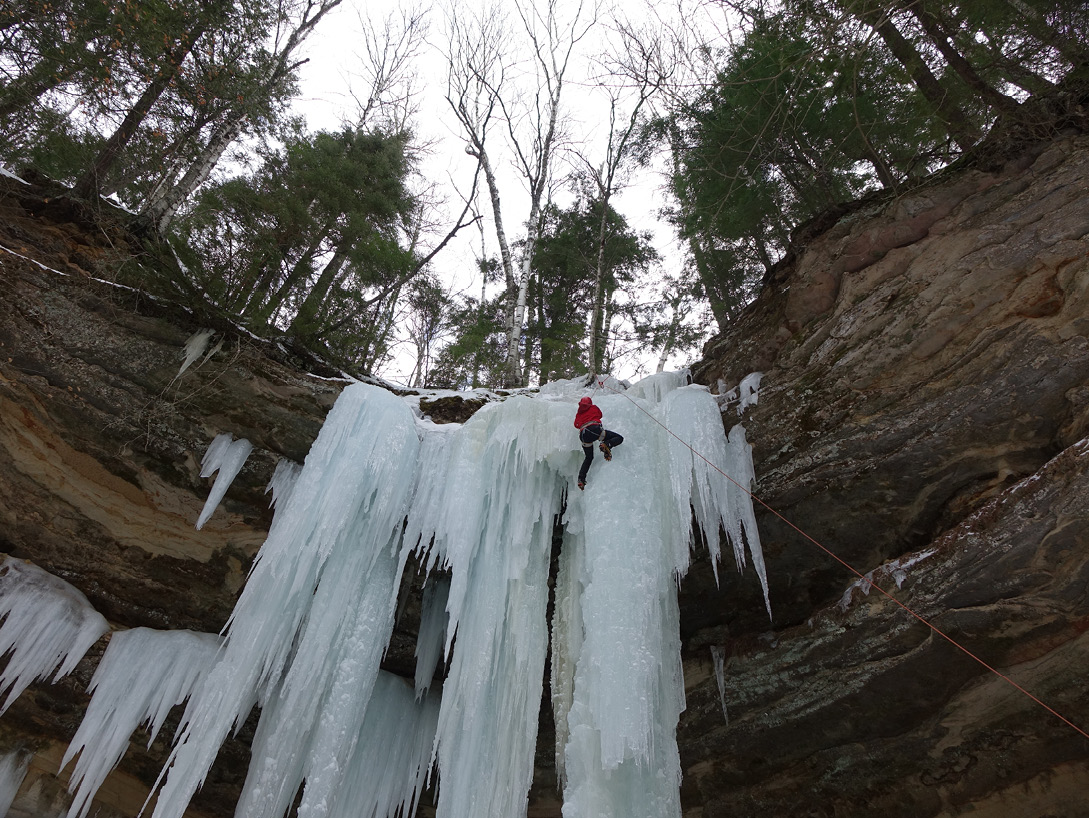
A Frozen Playground
Pictured Rocks is well-known for its many waterfalls. However, as winter approaches and temperatures dip below freezing, these waterfalls turn into massive, glacier-like ice structures. Even places that don’t have moving water in warmer months will begin to form thick layers of ice
from the water that seeps out of the sandstone. Although it is dependent on the weather, ice typically begins to form on the rocks in mid- December and lasts until early to mid-spring.
Susan Reece, chief of interpretation and education for Pictured Rocks, says the park service doesn’t plow the majority of the roads in wintertime. However, Sandpoint Road is typically passable by vehicle and provides a view of the Pictured Rocks escarpment, a rocky cliff a few hundred feet from the road that is home to one of the best ice curtain formations in the park. And you can bet that all this ice doesn’t just bring tourists into the park for photo ops. Pictured Rocks has become a mecca for ice climbing. The state has even created a festival, held just a short distance from the park, around the activity—the Michigan Ice Fest. The Michigan Ice Fest usually takes place in late January or early February, although it was canceled in 2021 due to COVID-19. The event provides an opportunity for expert climbers to show off their skills and novice climbers to learn a few things through one of the many demonstrations and classes offered. The festival is BYOG (bring your own gear), but gear is also rentable for the entire weekend for demonstrations and one-time-only rentals for classes. In 2022, the Ice Fest is expected to take place February 9–13.
If ice climbing isn’t your thing, there are a plethora of other winter adventures to be had at Pictured Rocks and the surrounding area. Because of the immense depth of snow and lack of plowing, Reece notes that the park is also a popular snowshoeing and cross-country skiing destination. Most designated snowshoeing trails are marked, but you can snowshoe virtually anywhere, with the exception of roads open to vehicles and the ski trails. For cross-country skiing, the park offers twenty miles of groomed trails open only to skiers, so you are guaranteed to have pristine snow and plenty of peace and quiet.
Although most of the park isn’t open to cars in the winter, snowmobiles are the preferred mode of transportation on designated routes. If you’re planning to stay at one of the park’s campgrounds, you’ll need to travel this way, as they aren’t accessible by car. Deep snow and wide-open spaces also provide the perfect concourse for recreational snowmobiling.
Whichever activity you choose, Pictured Rocks National Lakeshore is a destination like no other. The park offers a rare opportunity to see winter’s beauty in its purest form, as Mother Nature turns the colorful sandstone cliffs into miraculous amphitheaters of ice and snow, the same way she has for millions of years.
For more info, visit nps.gov/piro
